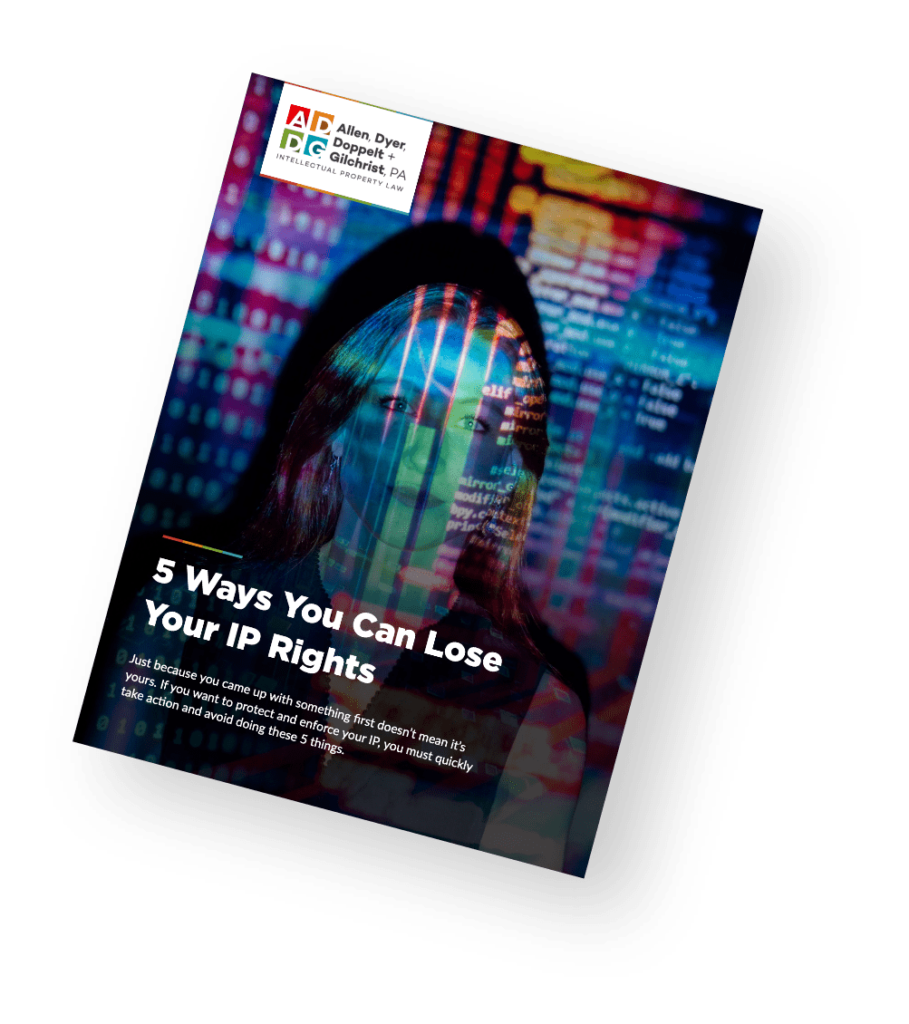Trademarks are granted some intellectual property protection under the common law simply by virtue of using them, but for maximum protection of your trademark, it should be registered with the United States Patent and Trademark Office (USPTO). However, the USPTO does not automatically approve all trademark applications. For example, your trademark application could be rejected if your trademark is too similar to an existing registered trademark and likely to confuse consumers. This is generally a more difficult rejection to overcome than other types of issues that may arise during the application process and is why it is important to perform a trademark clearance search before filing an application. There are also a few common issues that may arise during the application process that are not difficult to overcome but can slow down the process and make you wait longer to receive your trademark registration. Accordingly, ensuring your trademark application is prepared correctly and in compliance with the Trademark Office rules and procedures will help increase the chances your trademark application will proceed through the registration process quickly and successfully.
Trademark Application Refusals Are More Common Than You Think
According to the USPTO, less than 50% of trademark applications are approved without issuing an Office Action. That’s more than 1 of every 2 applications is initially rejected, a substantial margin. When the Trademark Office rejects a trademark application, the applicant receives what is known as an Office Action from the USPTO, which explains the reasons for the rejection. The applicant then has six months to respond to the Office Action to address the rejection by presenting legal arguments to overcome the rejection and amend the trademark application as needed. A substantial portion of those responses do end up being found by the Trademark Office as being persuasive to overcome the rejection upon further review.
The process which governs the process of applying for a trademark is outlined under the Lanham Act, also known as the Trademark Act of 1946. The Lanham Act governs trademarks, service marks, and unfair competition, and contains many of the legal concepts and definitions which are used to consider trademark applications, some of which we will discuss below. In addition, a Trademark Manual of Examining Procedure (TMEP) provides trademark examining attorneys in the USPTO, trademark applicants, and attorneys and representatives for trademark applicants with a reference work on the practices and procedures relative to prosecution of applications to register trademarks in the USPTO. The TMEP contains guidelines and materials in the nature of information and interpretation, and outlines the procedures which the Trademark Office is required or authorized to follow in the examination of trademark applications.
Reasons for Trademark Applications Being Refused
While there are many reasons that the USPTO may reject a trademark application, there are some which occur more often, and knowing those can help you select a trademark more likely to be approved and to prepare an application that is in compliance with the applicable rules.
Likelihood of Confusion
The most common reason for denial of a trademark registration is the “likelihood of confusion,” or the likelihood that your trademark will be confused with registered trademarks. A likelihood of confusion exists between trademarks when the marks are so similar and the goods and/or services for which they are used are so related that consumers would mistakenly believe they come from the same source. Each trademark application is decided on its own facts, and no strict mechanical test exists for determining likelihood of confusion.
We can use the well-known TESLA registered trademark that is used with electric vehicles as an example of a “likelihood of confusion” analysis. If you were to attempt to register a trademark for “Tesla” for use with electric generators, even if the representation of your logo is substantially different from the car company, the trademark examining attorney would deny your application because the trademark is identical and the electric generators are related to electric vehicles. To find relatedness between products, the products do not have to be identical, only related in such a manner that consumers are likely to assume (mistakenly) that they come from a common source.
Merely Descriptive and Deceptively Misdescriptive
A trademark that is “merely descriptive,” such as “Tasty Snacks” or “Fast Cars” may be refused on the grounds that the description is too broadly applicable for too many unique products or services. In other words, the proposed mark simply identifies a feature or quality characteristic of a product which is available from multiple other companies or brands. However, oftentimes a trademark that is found to be “merely descriptive” may be registered on the Supplemental Register. This is in contrast to a trademark that is found to be “generic”, which in that case can never be registered.
“Deceptively misdescriptive” means that the name of your trademark incorrectly describes a characteristic of your product or service. “Free-Range Meat” from animals raised in confinement would be a deceptive misdescription, as well as “Real Wood” for furniture made of compacted wood fiber. These types of trademarks are not eligible for registration.
Wrong Trademark Class
This is an issue that should not be a problem for common products or services for which the trademark is being registered. However, this is an issue that is sometimes encountered if a product or service is not commonplace or is otherwise difficult to describe within the Trademark Identification Manual. Every type of company or product, i.e. food manufacturing, retail, clothing, construction, and all other industries are grouped under numerical categories known as the “class” by the USPTO and can be found in the Trademark Identification Manual. For example, “education and entertainment services” fall under class 41, while clothing, footwear, and headgear sellers and manufacturers are categorized as class 25.
Geographical Terms
If your mark is geographically descriptive in a manner that is in no way connected with the true geographical origin of the actual company or product, that is known as being “geographically deceptively misdescriptive.” For example, “Wisconsin Cheese” that is made in Minnesota, or “Idaho Potatoes” that are grown in Colorado would not be acceptable marks.
Ornamentation
Simple decorative aspects of a product, such as a design printed on clothing, or particular shapes given to a piece of furniture or accessory, cannot be trademarked. An example of this would be the circular shape of a watch, which is a primary feature of the public-domain timekeeping technology, and must be available for anyone making watches to use. However, colors, sounds, or scents can be trademarked if they serve to identify the source of your goods or services.
How A Trademark Lawyer Can Help You Avoid Issues With Your Application
There are many reasons, such as those discussed above, why your trademark application may end up being rejected. Our experienced and knowledgeable trademark attorneys at ADD+G have the skills and expertise to help you avoid rejections and navigate through the entire application process to the issuance of your trademark registration.
Contact us today for an initial consultation about your trademark application or rights. If you are launching a new company, product, or service, or looking to protect your trademark from infringement, we stand ready to help you every step of the way.
About the Author
Matthew McKinney practices in all areas of intellectual property, representing a wide range of clients in connection with the acquisition, transfer, enforcement and defense of their intellectual property rights.
Share This




